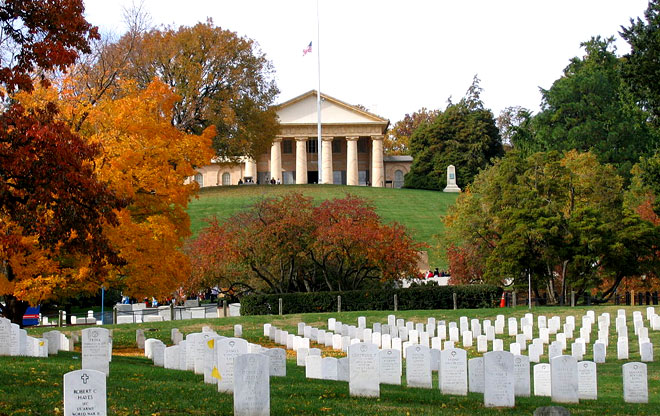
Arlington House
To discourage the Custis-Lee family from returning to the family plantation, Union officers were buried on the estate grounds.
Image: Wikimedia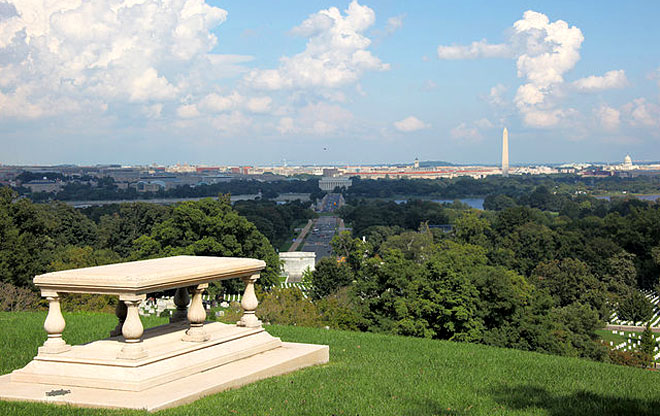
L'Enfant's Grave
Interestingly, not far from the soldiers, is the grave of Pierre L’Enfant who was reinterred at the site in 1909. His grave is located at the top of the hill in front of the mansion. His grave offers one of the most amazing views of the city he helped design.
Image: Wikimedia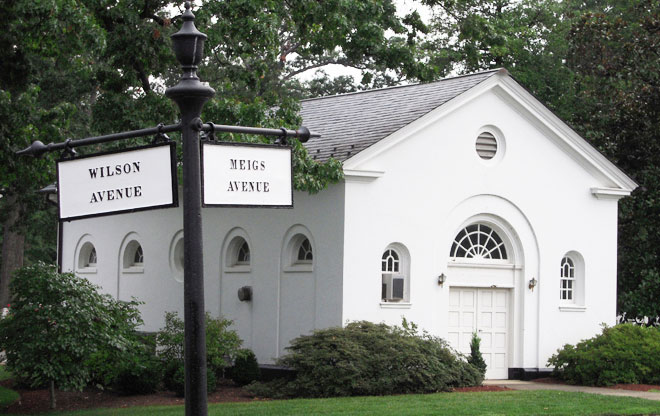
Brig. Gen. Montgomery Meigs
It would be hard to understand the history of Arlington Cemetery without understanding the role Brig. Gen. Montgomery C. Meigs played. A Georgian who graduated from the U.S. Military Academy, Meigs entered the Corps of Engineers where he oversaw numerous civil engineering projects in and around D.C., including the construction of the Capitol Dome. Meigs served under Lee. When Lee resigned his commission in the Union Army to join the Confederate Army, Meigs seemed to have irrationally harsh feelings of hatred and revenge toward Lee.
Image: Dena Kennett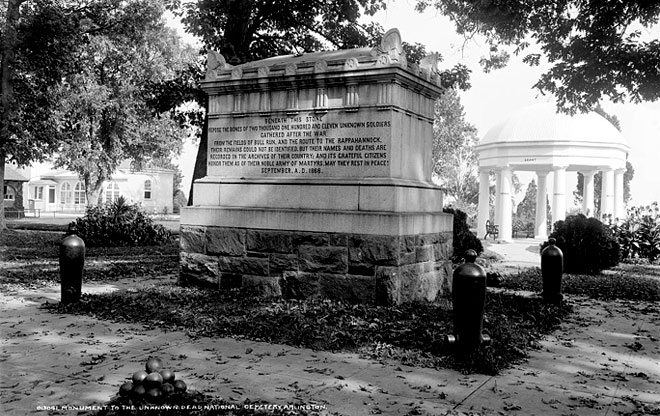
Meigs' Revenge
Under Meigs’ direction, the Union Army took control of Arlington House and surveyed and laid out the land. One of his first acts was to create the mass grave of 2,111 Union casualties from the battles of Bull Run in Mrs. Lee’s rose garden. He was disappointed that the first burials (Section 1) were located far behind the house. If you look at a map you'll see Section 2 almost encroaches up to the front porch. He said he wanted the bodies “buried so close to the house that they can never live there again.”
Image: Library of Congress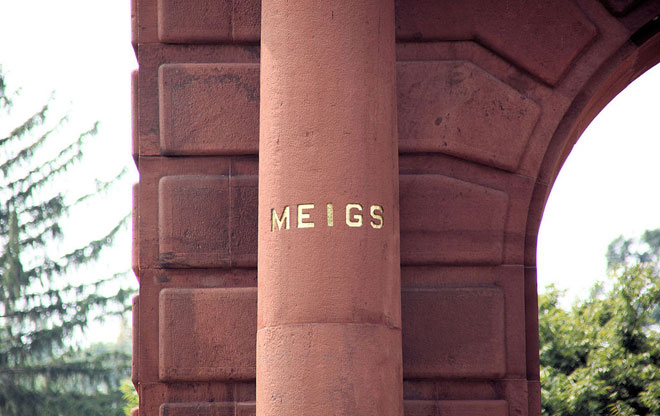
Meigs' Legacy
Meigs fought unrelentingly for decades to ensure the government had sound title to the cemetery and served as quartermaster general for two decades. During his tenure as Superintendent of Arlington National Cemetery, he erected the Memorial to Civil War Unknown Dead, the Old Amphitheater, enclosed the cemetery in a low sandstone wall, constructed roads and pathways, and erected the McClellan Gate, on which he had inscribed his own name.
Image: Wikimedia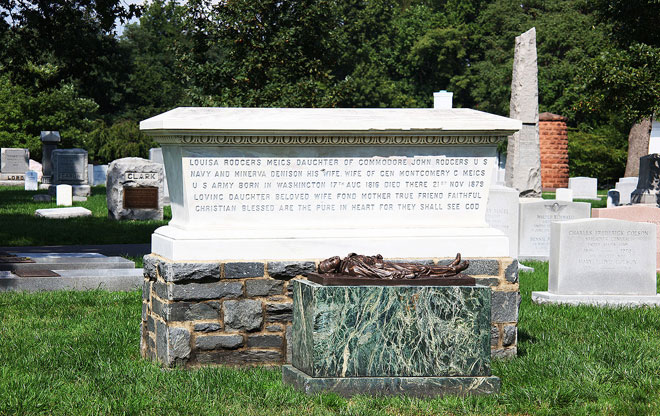
The Meigs' Graves
The graves of his wife, father, his in-laws, and son anchor Row 1, Section 1. His own funeral procession passed by Mrs. Lee’s garden and end at Meigs Drive where he was laid to rest in the grand cemetery he created.
Image: Wikimedia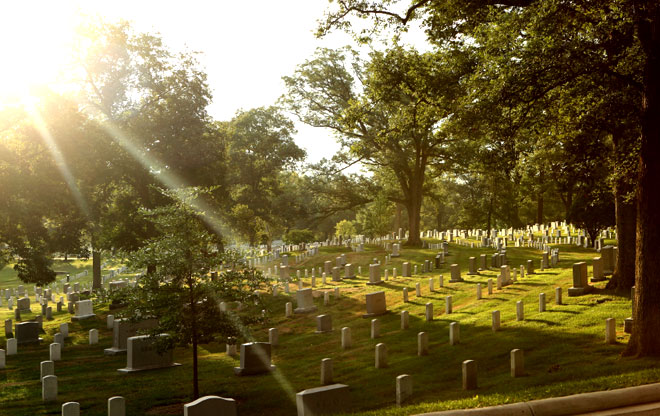
A Tree-rich Cemetery
The cemetery is 624 acres and contains approximately 8,400 trees and 562 acres of turf. All of this requires an amazing amount of care to keep in pristine condition. At least once a week, all the grass is mowed. There are about 300 varieties of trees, some of which are over 200 years old. Within the grounds, there are also more than 28 monuments and 142 memorials. Some of these are living memorials: Individuals and organizations can donate trees and plants in memory of a loved one or group.
Image: istockphoto.com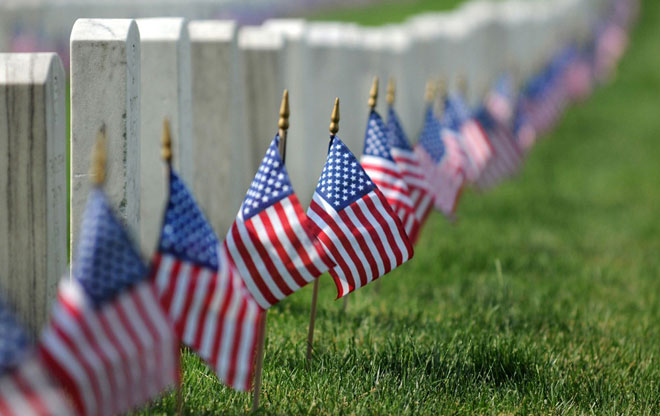
Vast and Personal
There are over 300,000 internments with nearly 100 graveside services conducted each week. With the ongoing expansion, burials should be able to continue until 2060. After the televised funeral of President Kennedy, there was such a significant increase in the requests for burials that stricter requirements had to be instituted. Every effort is made to make each burial individual and special, with caissons drawn by black or gray horses and bearing a flag-draped casket.
Image: Wikimedia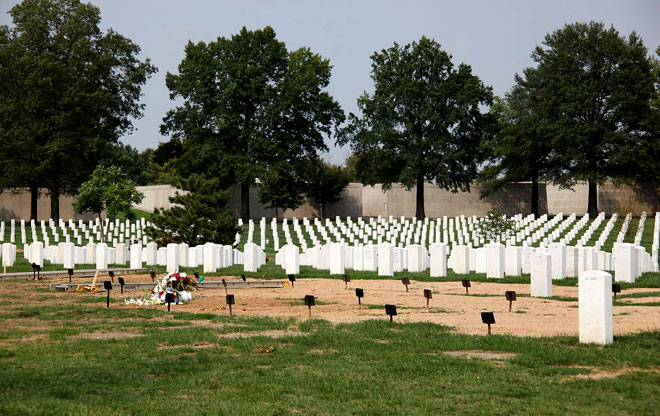
A New Community of Remembrance
The largest groups of soldiers at Arlington are from the Civil War, followed closely by those from World War II. Most visitors only see three things: JFK’s grave, Arlington House, and the Tomb of the Unknown Soldier. However, exploring beyond gives a deeper understanding. Visit Union Pvt. William Christman’s grave in the lower cemetery, the first military burial at Arlington, section 64, where victims of the 9/11 terrorist attack on the nearby Pentagon are buried, or section 60, the primary resting place of service members who have died in Iraq and Afghanistan.
Image: Wikimedia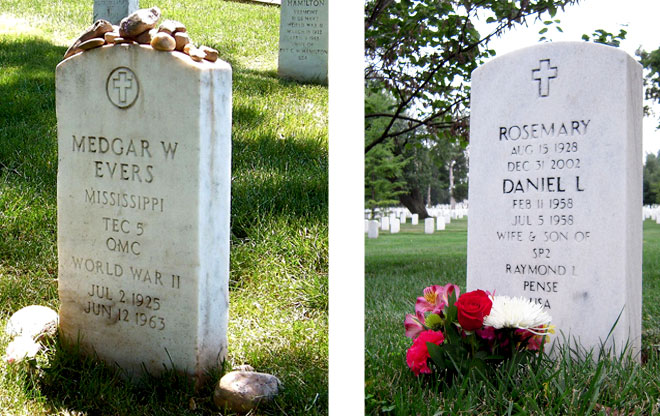
Symbols on Gravestones
The headstone inscriptions generally include the basic information about the fallen soldier: his or her name, dates of birth, and death and branch of service. There may also be optional details included such as day and month of birth and death, rank achieved, and war service. The symbols usually found on Arlington’s headstones are “emblems of belief,” representing the soldiers’ faith or religious practices. As of 2011, 41 symbols of beliefs are available for the headstones.
Image: Dena Kennett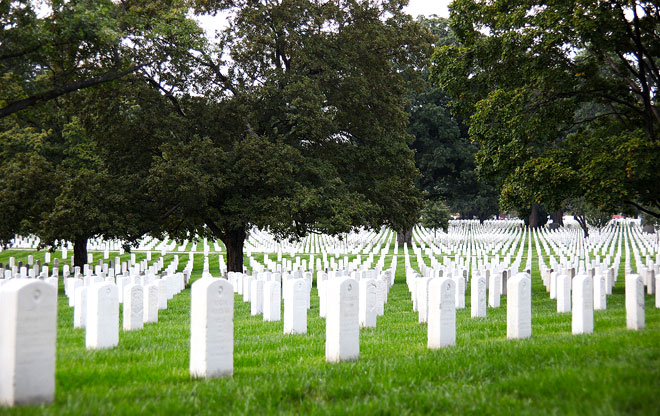
Rows upon Rows
It is humbling to see what appears to be unending rows of graves rise and fall with the topography. The simple white headstones, placed in uniform rows became the recommended military headstones as the McMillian Commision came to the sad realization that the number of graves would soon increase significantly as a result of the country’s involvement in World War II. They recognized the need for a general plan and for appropriate headstones for military cemeteries—not only Arlington, but all national cemeteries.
Image: Wikimedia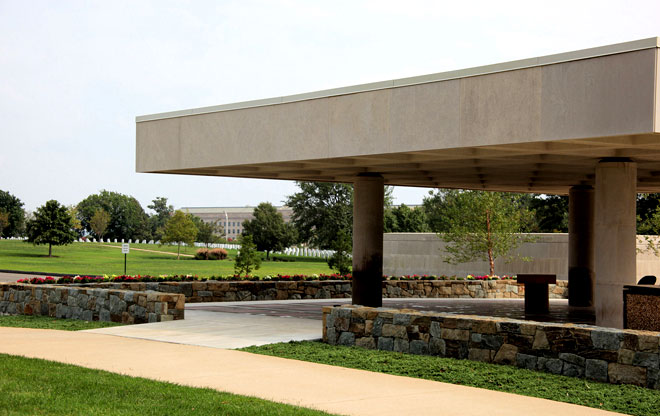
The Columbarium
In 1980, the 5,000-niche columbarium for cremated remains was opened, and eventually 50,000 more niches were added. The criteria for the columbarium are more liberal than the ground burials and extend to all honorably discharged veterans.
Image: Wikimedia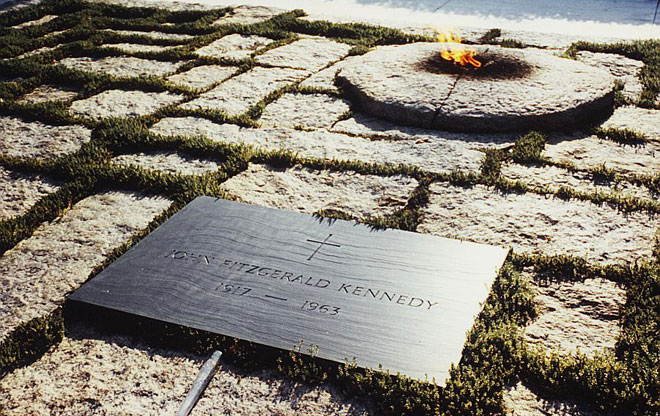
JFK's Gravesite
The design of JFK gravesite was a lengthy and thoughtful process. John Carl Warnecke, a friend of the Kennedys, was selected by Jacqueline Kennedy to design the three-acre permanent gravesite. After a year of study, Warnecke concluded the site should be a grave, not a monument or memorial, the eternal flame should be the centerpiece, and the site’s design should be kept as simple as possible. Warnecke kept control of the gravesite. He reached out to Hideo Sasaki and Lawrence Halprin to help with the design of the approach and setting.
Image: Wikimedia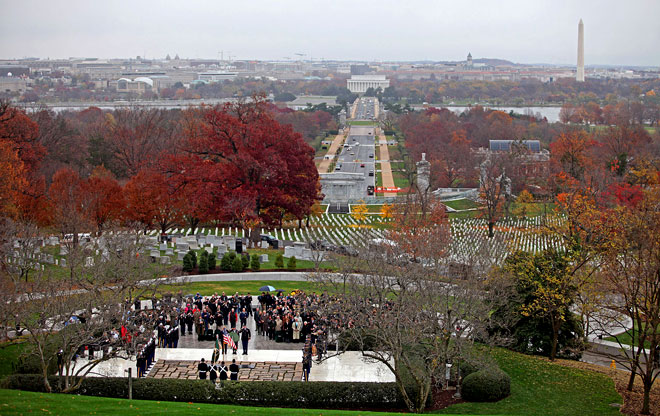
Wreath-laying Ceremony
The final gravesite design is meant to reflect the early New England tradition of setting headstones flat into the ground surrounded by grass and Kennedy’s Catholic faith. Though, a decision was made just before construction to surround the plot with 150 year old rough-hewn, reddish-gold granite fieldstone from Cape Cod because there was concern grass wouldn’t hold up well in D.C.’s sweltering summers. The walkways gracefully accommodate a 45-degree uphill slope. They walkways were sited to accommodate a specimen Oak tree.
Image: Wikimedia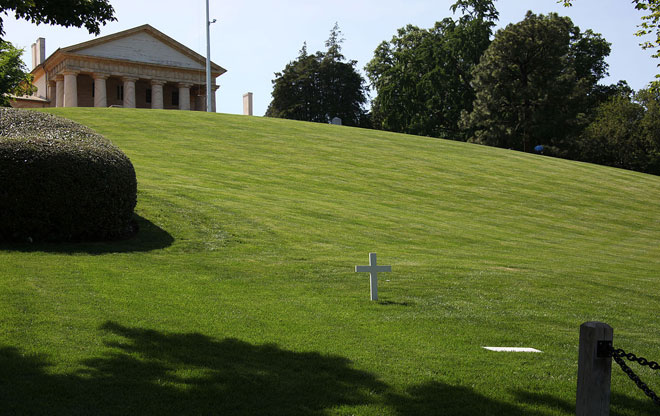
Robert F. Kennedy's Gravesite
JFK’s gravesite was expanded to include Robert F. Kennedy and Edward M. Kennedy’s gravesites. Both burial sites are marked with the only wood grave markers in Arlington. I.M. Pei was chosen by the Kennedy family to design the permanent grave and memorial for Robert Kennedy to compliment the JFK gravesite. Interestingly, Pei was able to site the grave and design memorial low granite wall and reflecting pool in only a few weeks. Ted Kennedy’s permanent gravesite is being designed by Sasaki Associates.
Image: Wikimedia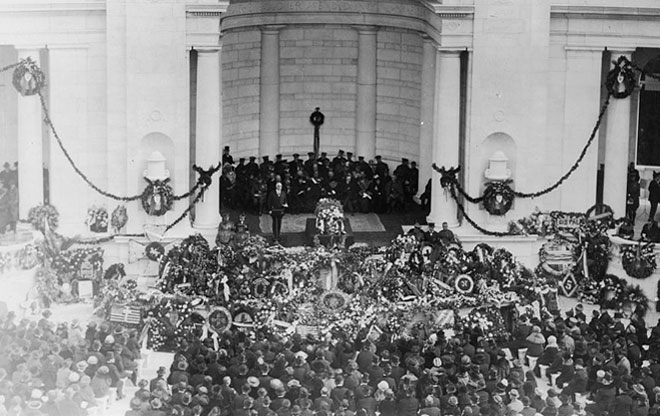
The Tomb of the Unknown Soldier
The Tomb of the Unknowns, also known as Tomb of the Unknown Soldier, doesn’t actually have an official name. In 1921, the U.S. Congress approved the burial of an unidentified American Serviceman from World War I. This photo was taken at the dedication ceremony, the same ceremony in which President Harding’s motorcade had to spend three hours stuck in traffic on his way to Arlington to attend.
Image: Library of Congress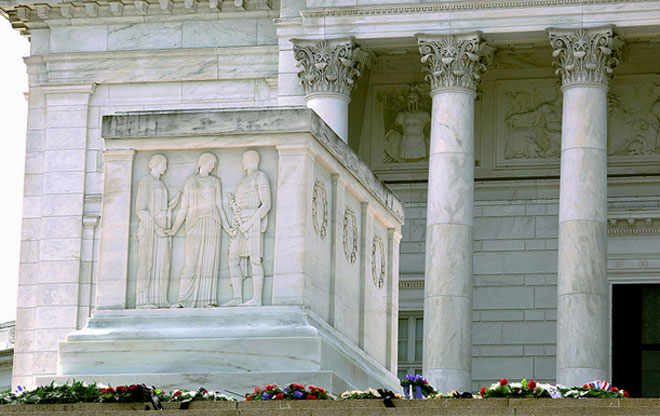
Tomb's Superstructure
The tomb was always to have a superstructure on top, but Congress did not authorize the funds for the superstructure until 1926. Architect Lorimer Rich and sculptor Thomas Jones won the design competition for the superstructure. Rich served in the Army during World War I and studied architecture after he returned from the war. He worked at McKim, Mead & White, who also designed the Memorial Bridge, until setting up his own firm.
Image: Dena Kennett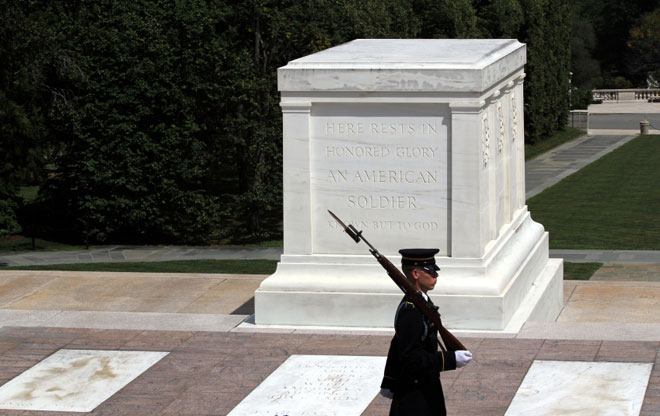
Crypts
The superstructure is made of Yule marble and the sculpting on all four sides was carved by the Piccirilli Brothers, the same craftsmen who carved the Lincoln statue for the Lincoln Memorial. The tomb was placed at the head of the grave of the World War I unknown. There are also crypts of unknowns from World War II, the Korea War, and the Vietnam War.
Image: istockphoto.com